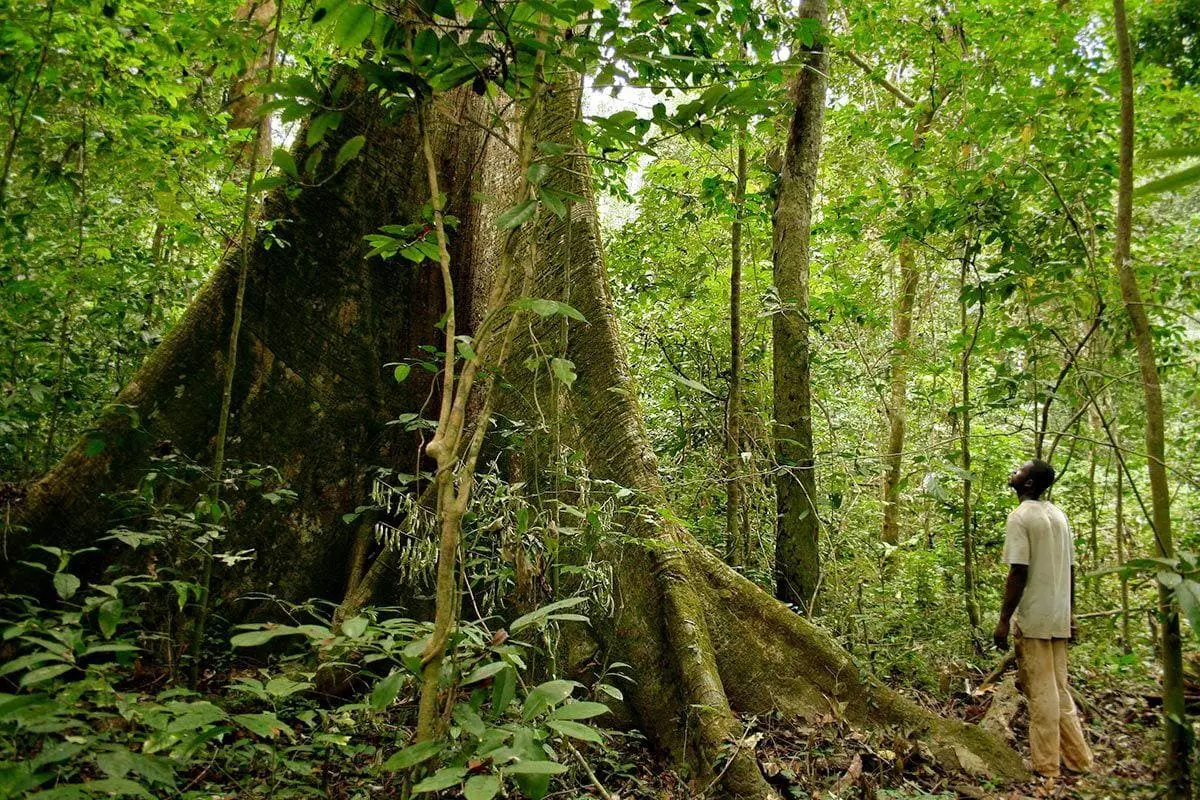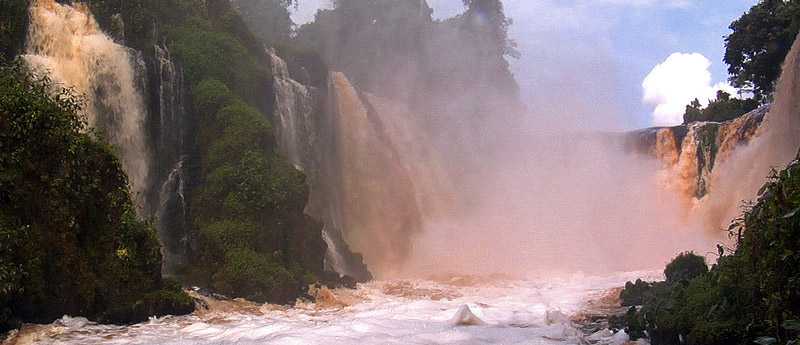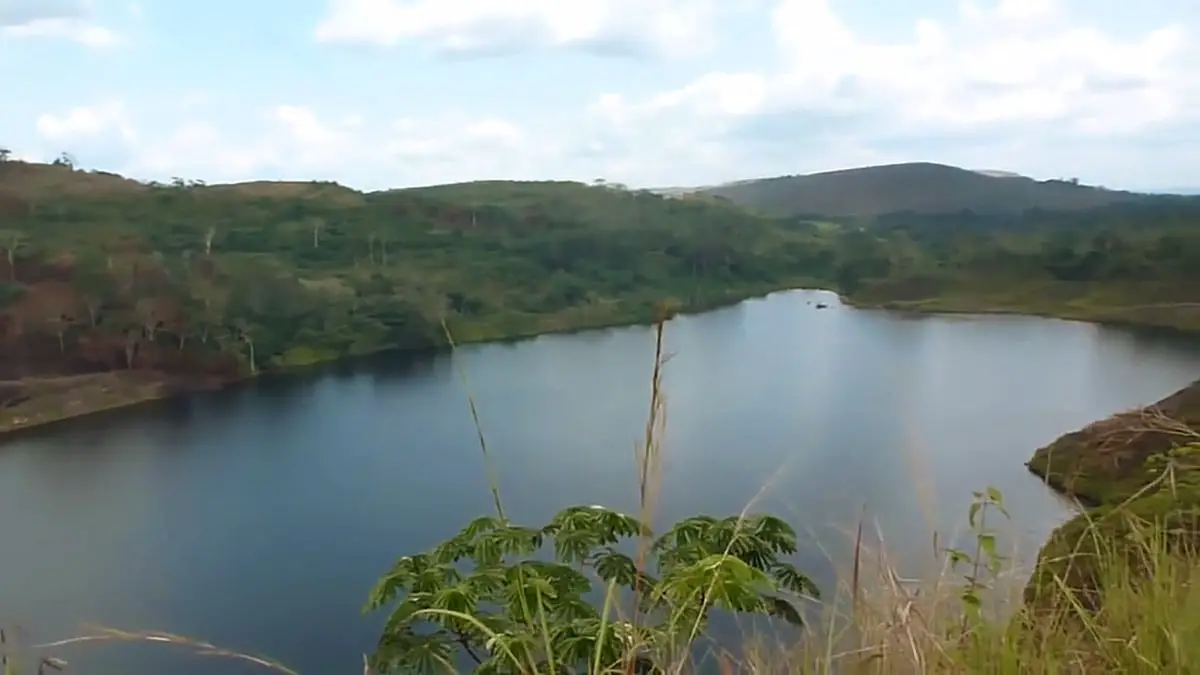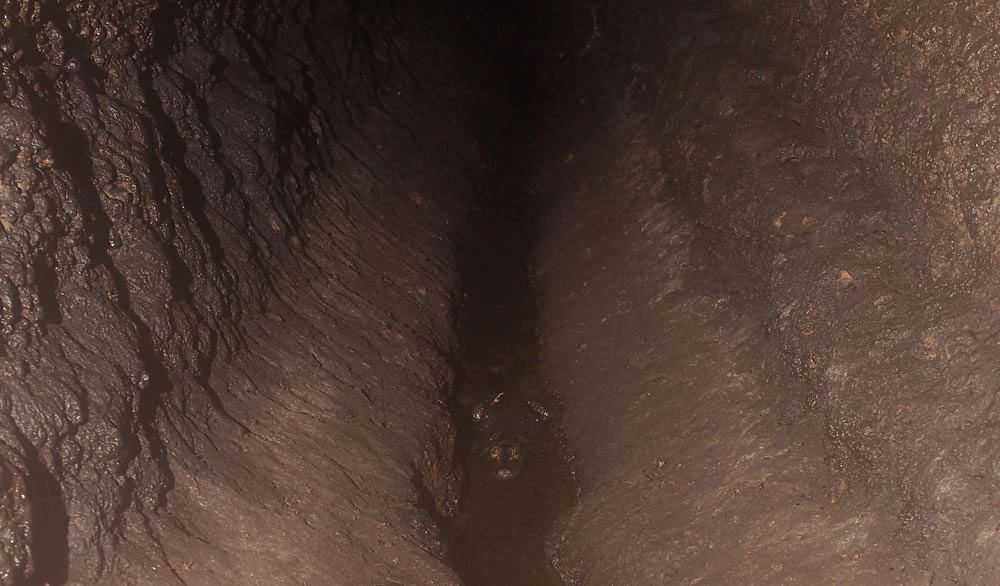Wondermondo 🢖 World 🢖 Wonders of Africa 🢖 Wonders of Gabon
Territory
Wonders of Gabon
K

 Highlights
Highlights
Gabon is a sparsely populated country that per 85% is covered with equatorial rainforest.
The most amazing wonders of Gabon are:
- Species rich ecosystems, including unusual relict rainforest that persisted during the ice age thanks to the fog from cold ocean streams nearby. Species diversity here is not too much investigated – most likely hundreds or thousands of species are still waiting for their discoverers.
- Waterfalls and rapids. Thanks to the countless waterfalls and thick forest Gabon was not penetrated by European intruders in the previous centuries. Now these landmarks represent a magnificent sight – sometimes falls are even 1 km wide. The most beautiful is the cascade of four great falls on Ivindo River. Many waterfalls are endangered by the development of hydropower plants and some have been lost already.
Map with the described wonders
If you see this after your page is loaded completely, leafletJS files are missing.
 Top 20 wonders of Gabon
Top 20 wonders of Gabon
Geological wonders
Kongou Falls
Ogooué-Ivindo
Some of the most impressive falls in Central Africa have formed on the Ivindo River and are surrounded by beautiful rainforests. Waterfalls have many cascades and are some 50-56 m tall and 3.2 km wide.

Mingouli Falls
Ogooué-Ivindo
Series of very impressive, powerful falls on the Ivindo River. The total height of all steps is 43 meters.
Djidji Falls
Woleu-Ntem
Group of three beautiful falls in the rainforest. The total height of the falls is 60 m.
Kuete-Mango Falls
Ogooué-Ivindo
Waterfall on Ivindo River.
Poubara Falls
Haut-Ogooué
Group of consecutive waterfalls and rapids on Ogooué River (Boume River?), the total height of falls is some 30 m.
Tchimbélé and Kinguélé
Woleu-Ntem
Two waterfalls on Komo River, total height – 110 m. Adversely affected by hydropower station.
Léconi Canyons (Cirque de Lekoni)
Haut-Ogooué
Deep, circular rock amphitheaters with numerous hoodoos – rock stacks. There are several such amphitheaters – Canyon Blanc, Canyon Rose, and Canyon Vert.
Tsengue Leledi Falls
Ogooué-Ivindo
The final great waterfall on the Ivindo River.
Ivela Falls
Nyanga
Spectacular falls with several cascades on the Moukalaba River.
Bam Bam Amphitheatres
Estuaire
Several large rock amphitheaters with hoodoos.
Bongolo Caves (Malibé Caves)
Ngounié
Cave with an extensive network of passages.
Oklo Mines
Haut-Ogooué
The only known site on Earth, where natural nuclear fission has taken place approximately 1.7 billion years ago in some 16 closely located sites. The evidence of this has been testified through an unusual composition of uranium, neodymium, ruthenium, and other materials.

nicktsurikov, screenshot from Youtube video
Biological wonders
Mount Seni and Mbe (Crystal Mountains)
Woleu-Ntem
Two mountain massifs with exceptionally high biological diversity, refugium of the Pleistocene rain forest. This ancient rainforest survived the ice age thanks to the fog from Benguela Current.
Doudou Mountains
Nyanga
Up to 700 m high mountains – refugium of the Pleistocene rainforest with a large number of species found only here. A complete biological inventory has not been made but preliminary research has resulted in finds of many species new to the science.
Abanda Caves
Ogooué-Maritime
Group of caves in lush rainforest. In these caves lives unique subspecies or, rather, newly developing species of dwarf crocodiles (Osteolamus tetraspis) that feed on bats.

Archaeological wonders
Lastourville Caves
Ngounié, Nyanga, Ogooué-Ivindo
Four limestone karst areas in a dense tropical forest. Caves in this region were used by humans since ancient times for settlement, ceremonies, and burial. Each cave served a certain purpose, e.g. Paoun Caves served for medical-magical ceremonies, and there were found traces of ancient weapon-making rituals. Lastourville cave is a large cave with an impressive, 45 m deep sinkhole and waterfalls inside it. Kessipougou Cave is 1.5 km long, and Grotte de Mbenalatembe is 2,380 m long, the longest known cave in Gabon. Grotte de Lebamba is 740 m long. The entrance to Ngoiringomo Cave leads through a waterfall.
Ayem rock art
Ogooué-Ivindo
Group of prehistoric rock carvings on both sides of the Ogooué River. A larger concentration of carvings is in four sites: Epona (410 petroglyphs, most are circles), Elarmekora (240 petroglyphs, mostly diamond-shaped symbols), Kongo Boumba (5 sites with 280 petroglyphs, mostly spirals) and Lindili (more than 20 carvings, mostly concentric circles).
Kaya-Kaya rock art
Haut-Ogooué
Group of some 30 prehistoric rock carvings – diamond (vulva) shaped, circular, elliptical rings, diverse figures.
Architecture wonders
Sindara Mission
Ngounié
Beautiful mission houses, built in the early 20th century. A gorgeous causeway of mango trees leads to the mission.
Schweitzer Hospital
Moyen-Ogooué
Historical hospital, founded by Albert Schweitzer in 1913. This institution serves the whole region of Gabon and has retained a tradition of voluntary work up to this day. Important institution of health research for tropical Africa.
 Recommended books
Recommended books
Gabon (Bradt Travel Guides)
Gabon, the land of the surfing hippo, is a West African country home to truly exceptional biodiversity. 30,000 gorillas stalk the jungle, manatees and humpbacks are present around the country’s 800 km of coastline and Gabon’s 13 national parks offer wildlife-watching experiences unlike any other. Bradt’s Gabon is the only English-language guidebook available and includes a comprehensive section on the country’s birds and bird-watching alongside chapters on history and culture.
Between Man and Beast
In 1856, Paul Du Chaillu ventured into the African jungle in search of a mythic beast, the gorilla. After wild encounters with vicious cannibals, deadly snakes, and tribal kings, Du Chaillu emerged with 20 preserved gorilla skins—two of which were stuffed and brought on tour—and walked smack dab into the biggest scientific debate of the time: Darwin’s theory of evolution. Quickly, Du Chaillu’s trophies went from objects of wonder to key pieces in an all-out intellectual war.


